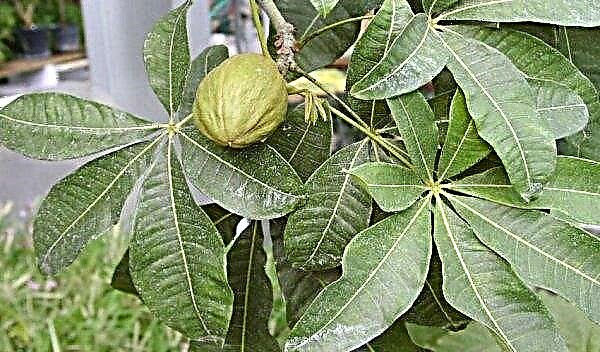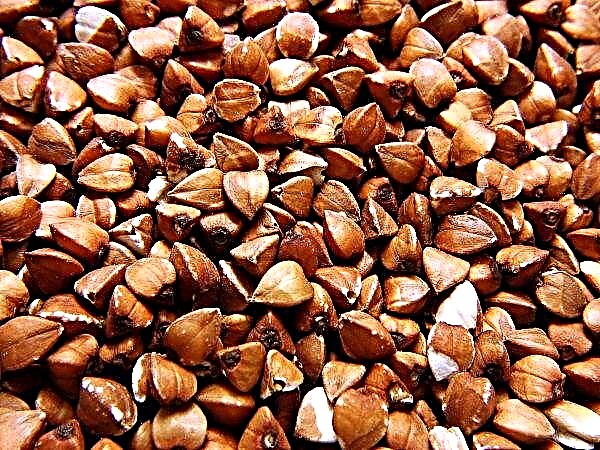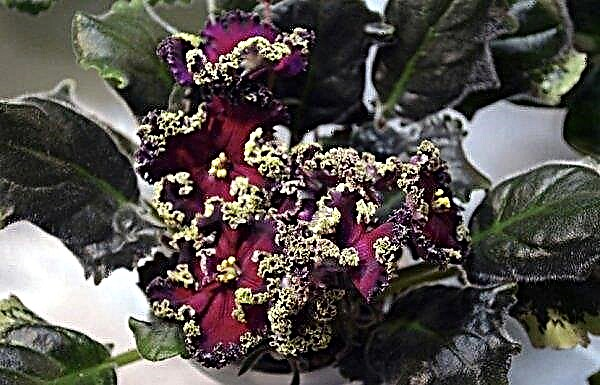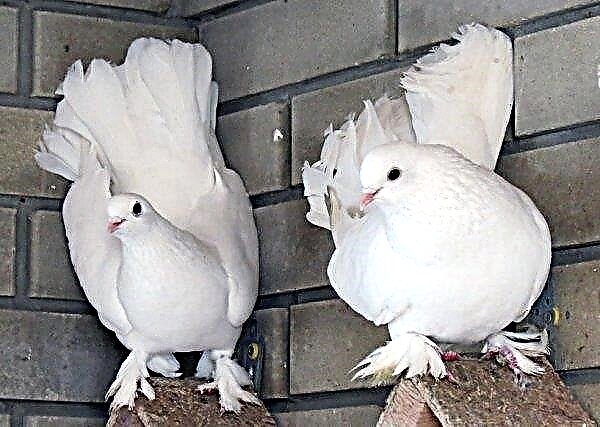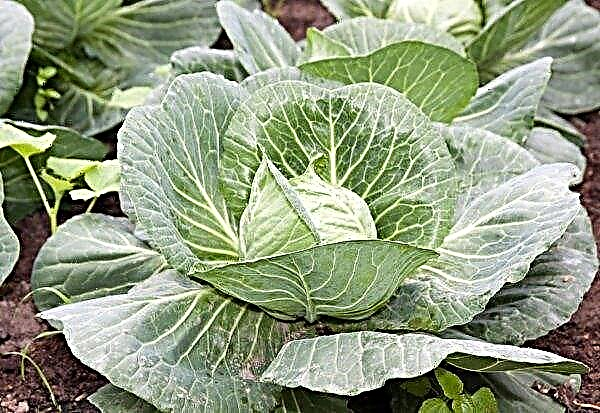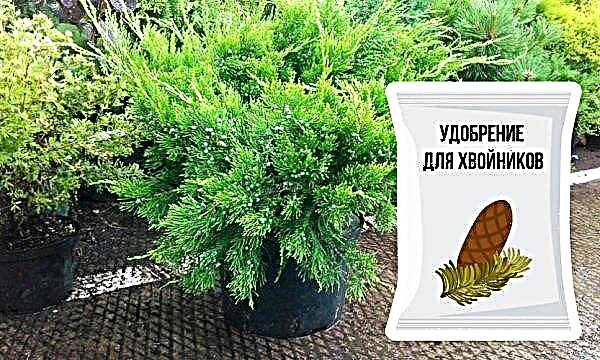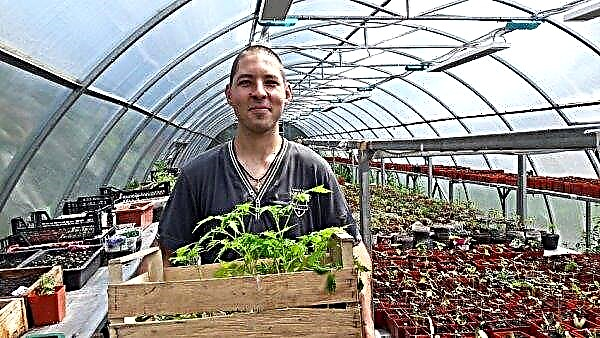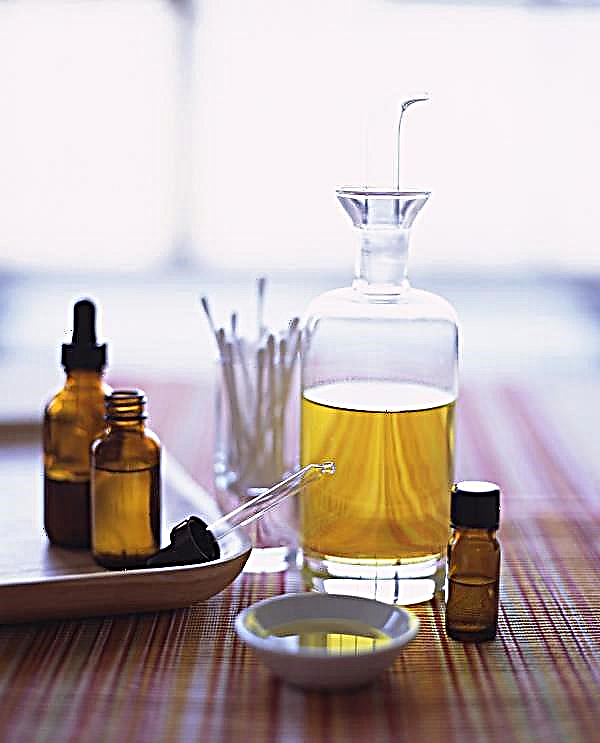Beautiful orchids in many amateur gardeners are favorite flowers. They are looking forward to their magnificent flowering, and each deviation of the state of this flower from the norm is alarming for their owners. We find out what causes the leaves of orchids to fade, and what should be done.
Why do orchids fade leaves: the main reasons
Leaves can dry for natural reasons - lower leaves dry out over time, but new ones grow. With this phenomenon, other leaves look good and do not lose their turgor. In the life cycle of some types of orchids, drying and dropping of leaves is the norm in a flowering or flowering plant.
The cause of foliage wilting may be stress from a transplant or after a change in conditions when the plant was only brought from the store or moved to another place. Do not immediately take any measures, but it is better to observe the plant.
Did you know? The largest flower was registered in the species Paphiopedilum sanderianum in 1991. In this orchid, the length of the opened petals reached 1 m 22 cm.
In other cases, leaf lethargy in these indoor flowers most often causes a violation of the conditions of maintenance and care of the flower. Let's consider them in more detail.
Temperature violation
A tender orchid does not tolerate overheating. In this situation, the moisture begins to evaporate greatly, the foliage of the flower begins to dry and lose its turgor. Typically, a plant overheats due to direct sunlight in the summer or due to exposure to nearby heating appliances.
Hypothermia
To the fact that the leaves of the orchid have become sluggish, can lead to a cold content. Most of the species grown indoors, are heat-loving plants (phalaenopsis, vanda, slippers, ludisia), and lowering the temperature to a level of + 15 ° C and lower reflects negatively on them. In this case, the plant suffers not only foliage, but also the roots. It should be remembered that these flowers do not tolerate drafts and strong temperature extremes.
Important! Different types of orchids require different temperature conditions. For example, cold-resistant species (cymbidium, cattleya) require differences in day and night temperatures, and in winter they are kept at + 10 ° C (at night).
Violation of watering and fertilizing
With insufficient watering, the orchid leaves begin to wither, so watering should be carried out regularly with an orientation to the temperature regime, the quality of the substrate, and the growing season. In this case, waterlogging or stagnation of water should be avoided, since this leads to rotting of the roots.
In this case, the lesion begins with the root system, and then the leaves begin to die. Especially careful should be with watering in the winter. At low temperatures, waterlogging can cause the death of the flower.
As for fertilizers, the rule applies - it is better to give the orchid less nutrition than overfeeding. These flowers have very sensitive roots that can suffer from an overabundance of mineral salts in the substrate.
Dense substrate
In an excessively dense soil, the roots of the orchid begin to lack the oxygen they need. In addition, the moisture in such soils stagnates, which can lead to diseases and death of the plant.
Root diseases
Many breaches of containment and care lead to root diseases. Most often, they are associated with waterlogging and stagnation of water. Sick roots are not able to supply the orchid with sufficient nutrition, which affects the condition of the whole plant.
The root system can also undermine pests, depriving the flower of food.
What to do and how to save the plant
If the leaves have faded for natural reasons, then you should not do anything, but wait until the leaf itself dries and separates. Then it can be removed.
When freezing, the first thing to do is remove the orchid from the substrate and inspect the roots. Soft roots are removed, and if the flower is left without roots, carry out the procedure of their growth. To do this, the base of the orchid, cleared of the roots, is placed 1 cm in water with Kornevin for 6 hours, and then dried.
This is done daily until the flower starts up new roots. Then the plant can be planted in a new substrate.
The same procedure is carried out for any problems that led to the loss of roots, but the plant has not yet died.
Sick roots are always cut to healthy tissues, and when they are infected with pests, they are also thoroughly washed. Then the plant is transplanted into a new substrate. When salinizing the soil with mineral fertilizers or a too dense substrate, it is necessary that you transplant the plant into new soil. To do this, you will need to buy a special substrate for orchids in a flower shop. It should consist of components of a plant nature (pine bark and cones, shell), be water- and breathable.
When salinizing the soil with mineral fertilizers or a too dense substrate, it is necessary that you transplant the plant into new soil. To do this, you will need to buy a special substrate for orchids in a flower shop. It should consist of components of a plant nature (pine bark and cones, shell), be water- and breathable.
Did you know? The cost of one shoot of an orchid of the Golden Kinabalu variety can reach 5 thousand dollars. This is a rare species that blooms no earlier than the 15th year of its life.
Prevention
To avoid such an unpleasant phenomenon as leaf withering, experts recommend the following preventive measures:
- In the heating season, the plant is rearranged away from hot batteries, and in summer it is shaded from direct sunlight or rearranged in a less hot place. When overheating, moisture loss occurs, so the plant is sprayed more often.
- In winter, with a decrease in temperature, watering and fertilizing should be reduced, keep the plant in a slightly dried state. So it is easier to tolerate low temperatures for it (about + 15 ° C).
- In the cold season, drafts should be avoided when airing and too cold window sills.
- In summer, you should adhere to the temperature regime at the level of +23 ... + 25ºС, and in the cold - +16 ... + 18ºС. The difference in temperature differences should be about 5 degrees.
- Immediately after acquiring a flower, you can’t fertilize the plant, but quarantine it with a thorough inspection.
- Watering is necessary so that the soil completely dries out. In hot weather, watering is increased to 2-3 times a week, and in winter it is reduced to 1 time per week or even less.
- For feeding, use special liquid fertilizers for orchids and plant them according to the instructions. If a new fertilizer is used, then the first few weeks should carefully monitor the flower. During the growing season, you need to fertilize the flower 1 time in 2 weeks, and in winter, reduce it to 1 time per month or completely stop.
- Once every 2 years in autumn or spring, it is necessary to transplant the plant into a new substrate, which is better to buy in a specialized store.
Important! Orchids are best grown in special transparent pots to control the condition of the roots and moisture.

Useful Orchid Care Tips
Specialists give the following helpful tips on caring for these beautiful indoor flowers:
- Do not worry about the roots protruding from the pot. This phenomenon allows the plant to absorb moisture from the air, so it is necessary to regularly spray the roots with filtered warm water.
- No need to plant this exotic flower in ordinary soil. As a soil, crushed wood bark, which can be purchased in specialized stores, is optimal.
- Watering orchids is best done in this way - put the pot in a tank with standing water for 20-30 minutes. After, when the excess fluid drains, the plant is returned to its permanent place.
- Succinic acid will help to cause violent flowering. To do this, 1 tablet of this product is dissolved in water, and then the plant is sprayed with the resulting liquid.
- The light mode should be at a level of about 12-14 hoursotherwise the plant may not bloom.
- After the orchid has completely faded, remove the top of the stem with a sharp knife so that the distance to the nearest living kidney is about 1.5–2 cm. Over time, a new shoot will grow out of such a kidney, which will give color. The flowering process will occur sooner than if you wait until the completely old shoot has dried out and the plant will give a new one.
Did you know? Orchid, according to Feng Shui, means abundance, growth, beauty and purity, as well as the pursuit of excellence.
The shrinking foliage of orchids can be a signal of inappropriate conditions of maintenance, improper watering, abuse of fertilizers, the need to change the soil, the presence of root diseases or pests. It is important to correct content errors in a timely manner and to monitor the condition of the flower.


